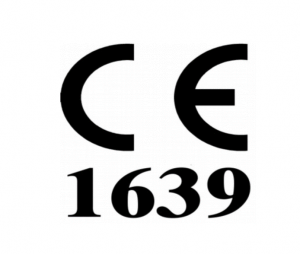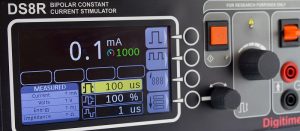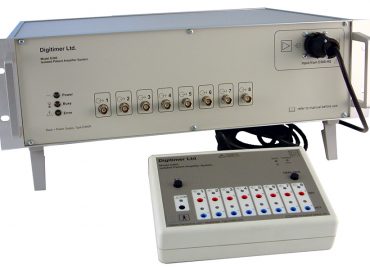Medical Devices and Human Research
Is a medical device necessary for my study?

It’s a question we are regularly asked by scientists and clinicians who are involved in human research, as they seek out the most appropriate devices for their application. Understandably, where human volunteers or patients are concerned investigators want to ensure the safety of their subjects and may be required to provide more formal assurance via an ethical committee or research review board.
The latter requirement often leads to researchers seeking out approved medical devices, as certified products provide the easiest route to ethical committee approval and the commencement of their research.
In Europe, devices that are medically CE marked to Council Directive 93/42/EEC (Medical Devices Directive) are usually accepted without question, as devices deemed safe for patients, should also be safe for research volunteers. The design and manufacturing processes for medical devices are laid out by the International Electro-technical Commission (IEC), which publishes an extensive series of technical standards (IEC 60601). While subject to regional adoption, manufacturers of medical devices must comply with some or all of the relevant standards.
As an ISO13485 certified medical device manufacturer, Digitimer’s medical products all have extensive technical files that cover areas such as design, component sourcing, manufacturing, risk management, clinical evaluation and the manufacturing processes. These files are continuously updated and regularly audited by our notified body in order to ensure regulatory compliance with these evolving standards.
So why not obtain medical device approval for any device used in human research?

Since the introduction of the European Medical Device Directive, this was the exact approach taken by Digitimer, as we determined that devices intended for human connection should be designed according to and certified against this directive. In our opinion an undergraduate student involved in a classroom practical examining H-reflex should be afforded the same protection as a patient undergoing a neuro-diagnostic examination in a hospital department. Our DS7A and DS7AH High Voltage Constant Stimulators are examples of Digitimer products that are medically CE marked and FDA cleared, but are predominantly found within academic research labs and university classrooms.
However, applying for and maintaining medical device certification is a highly expensive process, which has become even more so in recent years and these costs have to be taken into consideration when setting the purchase cost of an EMG amplifier or electrical stimulator. As a result, it is imperative that the manufacturer has a full appreciation of the market potential before embarking on the development of a new medical device.
Further, once a medical device is approved it is difficult for a manufacturer to make significant changes to the specifications, for instance to suit the requirements of a few researchers who might need an enhanced current output or longer pulse duration from an electrical stimulator. This tighter regulation of product design is intended to enhance safety, but can have the unforeseen consequences of restricting the breadth of research innovation and possibly holding back the development of new or improved medical devices.
What’s the solution?
While re-assessing our interpretation of the EU Medical Device Directive, we became aware of a case brought to the European Courts of Justice (ECJ) in 2012 by two manufacturers within our sector. The case sought to determine if a device solely marketed for the purpose of human research and not intended as a medical device (under the definition of the MDD), should or even could be certified as a medical device.

There are various commentaries (for example here) which cover the case in greater detail, alternatively you can read the judgement. The ultimate decision of the ECJ supported the view that a device that was neither marketed for nor intended to be used within the scope of the MDD, may be excluded from the process of medical device certification, even if it was used on human subjects.
While it is not particularly definitive, this ruling has helped to clarify the correct approach for the certification of human research devices and some of Digitimer’s most recent products have been developed and are marketed exclusively for human research applications.
How do I determine if a research device is safe for human use?
Within the EU and UK, electrical laboratory instrumentation that is not CE certified to the MDD is generally only able to be certified to IEC directives relating to general/operator safety for low voltage devices (LVD 2014/35/EU) and electromagnetic compatibility (EMC, 2014/30/EU). Neither of these has any relevance to the safety of the subject connected to the device, so the onus is on each manufacturer to ensure any risk to the subject is mitigated.
We are fortunate that as an ISO13485 certified medical device manufacturer, Digitimer has tremendous expertise in the design of equipment that is fully compliant with MDD and we are able to implement relevant standards from IEC 60601 within the design and manufacturing processes of our human research products.

The Digitimer DS8R is a recent example of where we have done exactly this. The DS8R was specifically developed as an advanced equivalent of our DS7AH stimulator, offering additional features that would not be needed in a device intended for diagnostic or treatment purposes. Safety of human subjects is still paramount, so even for this research device, we undertook to comply with many of the relevant standards, including several from IEC 60601:-
- 60601-1 General requirements for basic safety and essential performance.
- 60601-1-2 General requirements for basic safety and essential performance – Collateral Standard: Electromagnetic disturbances – Requirements and Tests.
- 60601-1-6 General requirements for basic safety and essential performance – Collateral standard: Usability.
- 60601-2-10 Particular requirements for the basic safety and essential performance of nerve and muscle stimulators.
Additionally, each Digitimer device is subjected to both high voltage isolation tests and electrical safety tests, during production.
Are there situations where a medical device is still the right choice?
As mentioned above, use of a medical device is sometimes the best option if a local ethical committee is unwilling to consider instrumentation designed for research. This may mean that certain studies will be impractical due to equipment limitations, but at least it allows them to be undertaken.
It may also make sense to use a medical device in clinical trials involving patients or when the equipment is to be used in a hospital environment. Some institutes and hospitals have a blanket policy which mandates the use of medically certified equipment. Fortunately, Digitimer provides a comprehensive range of research and medically approved instrumentation and where a research device is favoured, we will do our best to support any ethical approval process through the provision of technical documentation relating to safety.



